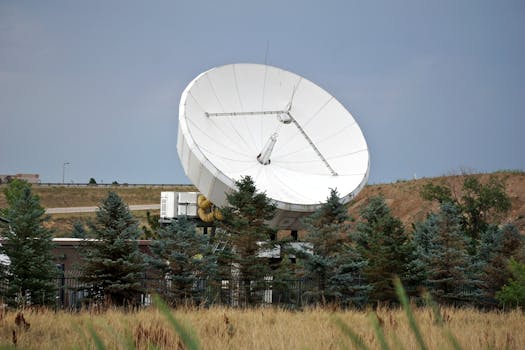Beyond Earth: How Recent Advances Are Shaping Satellite Telecommunications

Beyond Earth: How Recent Advances Are Shaping Satellite Telecommunications
Satellite Telecommunications
Satellite telecommunications is a rapidly evolving field, with recent advances in technology enabling faster, more reliable, and more secure connections. The use of satellites in telecommunications has been around for several decades, but it is only in recent years that we have seen significant improvements in satellite design, launch technologies, and signal processing techniques. These advances have enabled the development of new satellite-based services, such as broadband internet, mobile communications, and navigation systems.
Satellite telecommunications offer several advantages over traditional fiber-optic and wireless networks, including global coverage, reliability, and security. Satellites can provide connectivity to remote and underserved areas, where traditional infrastructure is lacking. They can also provide backup connectivity in case of natural disasters or network outages.
Recent Advances in Satellite Telecommunications
Recent advances in satellite telecommunications include the development of new satellite designs, such as high-throughput satellites (HTS) and very high-throughput satellites (VHTS). These satellites use advanced technologies, such as phased arrays and digital signal processing, to provide higher bandwidth and faster data rates. The use of HTS and VHTS satellites has enabled the development of new satellite-based services, such as broadband internet and mobile communications.
Another recent advance in satellite telecommunications is the development of new launch technologies, such as reusable launch vehicles and small satellite launchers. These technologies have reduced the cost of launching satellites into space, making it more affordable for companies and organizations to develop and launch their own satellites. The use of reusable launch vehicles has also enabled the development of new satellite-based services, such as satellite constellations and satellite-based internet of things (IoT) networks.
Applications of Satellite Telecommunications
Satellite telecommunications have a wide range of applications, including broadband internet, mobile communications, navigation systems, and earth observation. Satellite-based broadband internet services, such as those provided by HughesNet and Exede Internet, offer high-speed internet access to remote and underserved areas. Satellite-based mobile communications services, such as those provided by Inmarsat and Iridium, offer global coverage and reliability, making them ideal for use in emergency response and disaster relief situations.
Satellite-based navigation systems, such as GPS and GLONASS, provide location information and timing signals, which are used in a wide range of applications, including aviation, maritime, and land transportation. Satellite-based earth observation services, such as those provided by DigitalGlobe and Planet Labs, offer high-resolution imagery and data, which are used in applications such as agriculture, environmental monitoring, and disaster response.
Future of Satellite Telecommunications
The future of satellite telecommunications is exciting and rapidly evolving. With the development of new satellite designs, launch technologies, and signal processing techniques, we can expect to see even faster, more reliable, and more secure connections. The use of satellite constellations and satellite-based IoT networks is expected to increase, enabling new applications and services, such as smart cities and autonomous vehicles.
The integration of satellite telecommunications with other technologies, such as 5G and artificial intelligence, is also expected to drive innovation and growth in the industry. As the demand for satellite-based services continues to grow, we can expect to see new opportunities for companies and organizations to develop and launch their own satellites, and to provide new and innovative services to customers around the world.




